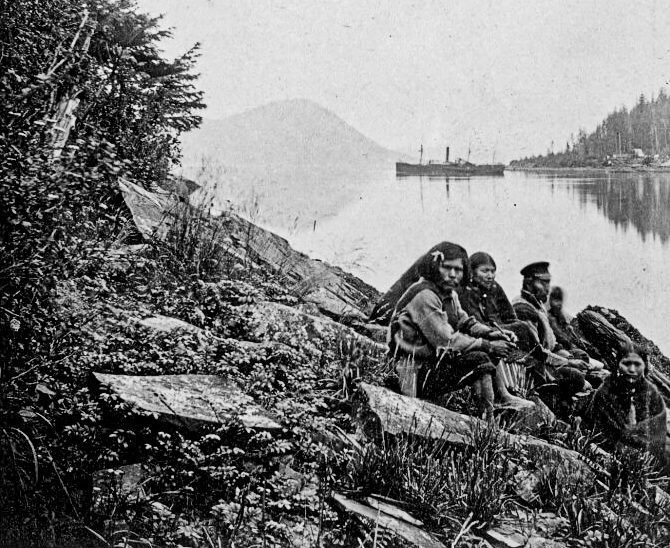Projekt Pacifik, kolesový parník ze zlaté horečky z poloviny 19. století, popisovaný jako „nejpolapitelnější a nejvyhledávanější hlavní vrak lodi na západním pobřeží“, byl lokalizován na 13. výpravě odhodlaného salvora – a společnosti byla právě udělena výhradní práva na znovuzískání lodi. obsah.
Rockfish byl založen v roce 2016, aby vystopoval 64metrový parník s bočními koly, který se potopil u státu Washington 4. listopadu 1875. Srazila se s clipperem. Orpheus v tom, co je považováno za nejsmrtelnější námořní katastrofu v historii amerického tichomořského pobřeží. Pouze dva z 327 lidí na palubě přežili potopení.
Postaven v roce 1850, původně sloužit prospektorům během Kalifornie Zlatá horečka, Pacific mířil na jih z Victorie v Kanadě do San Francisca, když ke srážce došlo, 80 mil jižně od nejseverozápadnějšího bodu USA Cape Flattery.

Projekt Pacific potopil za méně než hodinu. Vyšetřování zjistilo, že na hlídce byly pouze tři nevycvičené a nezkušené posádky a že její záchranné čluny mohly nést pouze 160 lidí. Žádný z těchto člunů nebyl v žádném případě použitelný, protože byl dříve naplněn vodou, aby pomohla stabilizovat plavidlo. The Orpheus Bylo zjištěno, že kapitán se odklonil od svého kurzu a udělal příliš málo, aby pomohl zasaženému Pacific.
Ve Victorii nastoupilo několik „prominentních a bohatých“ cestujících Pacific spolu s horníky vracejícími se ze zlatých nalezišť Cassiar v Britské Kolumbii, což vedlo Rockfish k přesvědčení, že náklad lodi pravděpodobně obsahuje zlato.


Prezident společnosti Jeff Hummel je jedním z řady lovců vraků, kteří se léta snažili najít Pacific. Rockfish provedl od roku 12 2017 předchozích expedic pomocí bočního skenovacího sonaru, kamerových saní tažených zespodu a ROV.

Počáteční prohledávací oblast společnosti o rozloze 338 čtverečních mil se z velké části zmenšila analýzou údajů o stopách trawlerů a dotazováním rybářů, z nichž někteří našli ve svých sítích uhlí. Analýza odhalila, že to pochází z dolu, který vlastní PacificMajitelé Goodall, Nelson & Perkins a toto zjištění snížilo oblast prohledávání na 2 čtvereční míle.
Nachází se v hloubce popsané pouze jako mezi 300 a 900 m Pacific vrakové místo bylo poprvé zobrazeno v říjnu 2021, ale nebylo okamžitě rozpoznáno. Jakmile byla identifikována, byla dvě lopatková kola s připojenou částí ocelového hnacího hřídele spatřena asi 650 m od trupu, což potvrdilo účty přeživších, že se oddělili během potopení.

Rockfish říká, že převede všechny získané nenákladní položky historického významu na neziskovou Severozápadní alianci pro vraky lodí (NSA) zdarma. NSA, kterou založili roky před Rockfish Hummel a historik a potápěč Matthew McCauley (její prezident), plánuje nakonec ukázat Pacific artefakty v novém muzeu v oblasti Puget Sound.
Prvními nalezenými položkami jsou kusy předního obložení trupu a ohnivé cihly, které oba zakonzervovala Texaská univerzita A&M. Doufá se, že cihla by mohla pomoci vyřešit otázku, zda Pacificběhem incidentu explodoval kotel. Rockfish říká, že doufá, že během příštích tří let dokončí záchrannou operaci, včetně lodních lopatkových kol.


V roce 1984 Hummel a McCauley, kterým bylo tehdy 20 let, vyhráli významný případ poté, co byli žalováni americkým námořnictvem kvůli vlastnictví vraku letadla, které našli, a získali jasný a bezplatný titul na letadlo. Kromě jiných vrakových projektů z Lake Washington vylovili další čtyři námořní bojová letadla z dob 2. světové války.
60 tun stříbra
Mezitím 60 tun stříbrných prutů v hodnotě 36 milionů amerických dolarů, získaných v roce 2017 z vraku lodi z 2. světové války ležícího 2.5 km hluboko poblíž Seychel v Indickém oceánu, bylo uděleno britské záchranné společnosti Rosse Hyetta, která je lovcem pokladů.
Jihoafrický soud rozhodl, že společnost Argentum Exploration, vlastněná bývalým výkonným ředitelem British Racing Drivers’ Club, si může ponechat 2,364 stříbrných prutů vyvezených z vraku před pěti lety. Stříbro bylo původně uloženo u britského Receiver of Wreck.

23. listopadu 1942 společnost British India Steam Navigation Company osobní/nákladní parník Tilawa převážel indické občany a náklad stříbra z dnešní Bombaje do Durbanu. Zlato mělo sloužit jihoafrické vládě k ražbě mincí.
Mezi dvěma torpédovými údery z japonské ponorky I-29 mnoho ze 732 cestujících a 222 členů posádky dokázalo loď evakuovat, ale 280 zemřelo při potopení. HMS Birmingham následující den zachránil většinu přeživších.
Projekt Tilawa byla lokalizována a identifikována v roce 2014 po 18měsíčním pátrání společností Advanced Maritime Services, které společnost Argentum najala k získání stříbra. Jižní Afrika tvrdila, že zlaté kovy jsou státním majetkem, ale Hyettův právní tým uspěl s tvrzením, že loď fungovala jako obchodní loď a nebyla na vládní misi.
Jihoafrický odvolací soud souhlasil s tím, že jako náklad byly mříže legálně využívány komerčně, ale uvedl, že pokud by loď patřila Jihoafrické republice, rozhodnutí by pravděpodobně zvýhodnilo vládu.
Také na Divernetu: Sledování pneumatik, 20 Nejlepší Vrak Na Světě, Vrak Atlantiku Nachází Ve Studeném Hořejším Jezeru

